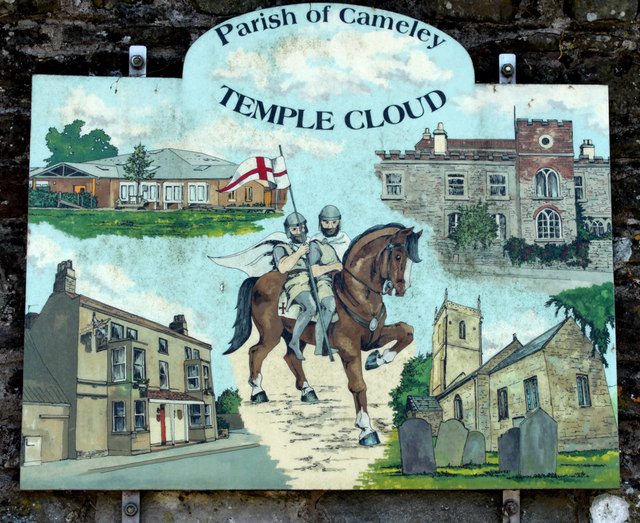2010 : Village sign, Temple Cloud
Introduction
The photograph on this page of 2010 : Village sign, Temple Cloud by Maurice Pullin as part of the Geograph project.
The Geograph project started in 2005 with the aim of publishing, organising and preserving representative images for every square kilometre of Great Britain, Ireland and the Isle of Man.
There are currently over 7.5m images from over 14,400 individuals and you can help contribute to the project by visiting https://www.geograph.org.uk

Image: © Maurice Pullin Taken: 22 Jun 2010
The sign is an obvious reference to the crusades, the knight in front has been wounded, must be a story here. Dare I say it? "Two Little Boys" "The Temple in the place name may relate to the Knights Templar. Cloud is thought to come from the personal name Cloda." Copied from: http://en.wikipedia.org/wiki/Temple_Cloud Although we don’t know exactly when the knights acquired the lands around Temple Cloud their legacy remains in the old field names – Inner and Outer Temple Field and Temple Mead. Juliet Faith, who has researched the history of the Templars in the West Country, thinks that they may have gained these lands through Almeric St Maur, a Provincial Master of the English Templars who held office between 1200 and 1218. An important advisor to King John, who relied on the Templars for financial support, Almeric was present at the sealing of the Magna Carta and is buried in London’s Temple church. The St Maur family were, at one time, big landowners in Somerset but all this came to an end in about 1400 when, without a male heir, the family name died out. It is more than likely, says Juliet, that it was through the St Maur family that the Templars became Lords of the Manor in Temple Cloud/Camely. In 1201 King John re-affirmed an earlier gift of these lands to the religious order. Before this date the manor had belonged to the monks of Bath Abbey and then later, to the De Marisco’s, a shifty and unreliable family who had a base on Lundy Island in the Bristol Channel and who were later declared outlaws. A strange, wooden, iconic head found at Camely – it has a lozenge border and Moorish or Semitic features – may possibly be linked to the Templars. Whatever its purpose or meaning – and we will probably never know now – it’s been suggested that it was bought to Somerset from the east by returning crusaders. Copied from: http://www.thisisbristol.co.uk/news/Undefined-Headline/article-1892483-detail/article.html

